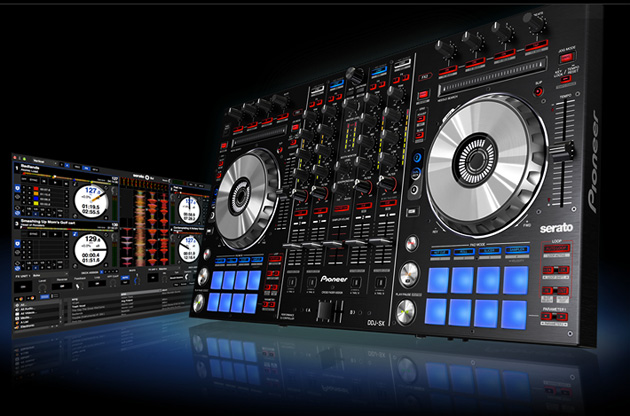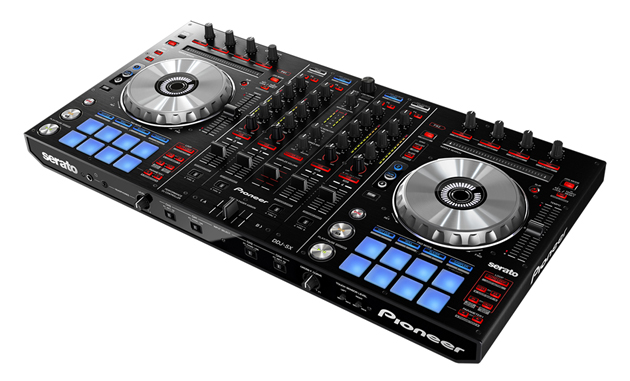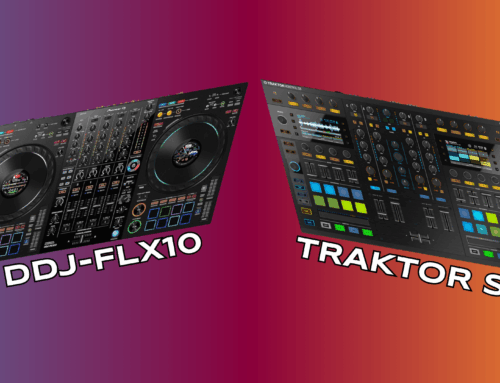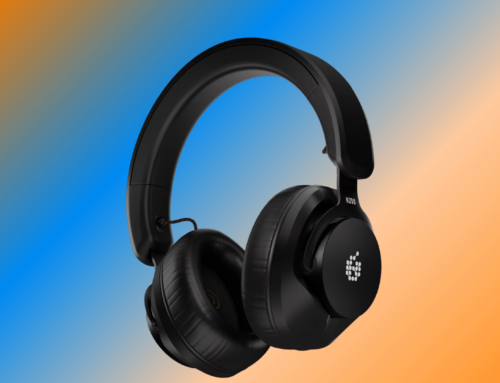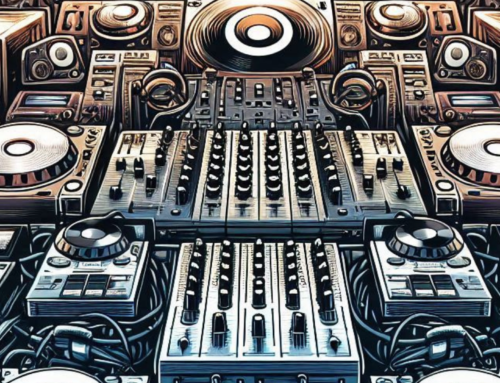The Pioneer DDJ-SX is a DJ controller specifically intended for use with the Serato DJ application. While the DJ controller market has been swarmed with dozens of clones recently, the DDJ-SX really is a formidable package. It features a four channel mixer, two capacitive jog wheels and the obligatory set of loop, FX and hot cue controls for each of its channels. The mixer portion of the controller also has four phono pair inputs, so it also works as a stand-alone mixer for use with separate input devices. These can be switched from line level or phono mode to accommodate analog turntables, or digital playback devices. The master outputs are balanced XLR jacks, making it clear that this unit is aimed at the pro, rather than the bedroom DJ.
The controls are nicely spaced and easily visible, and everything has the sturdy, considered feel of Pioneer’s other Digital DJ gear. The jog wheels on the genre-defining CDJ have been complimented many times over for their slick appearance and responsive feel. The same ones are on display here, and as with the CDJ, the sensitivity can be adjusted using controls on the front panel. This has always been the goal of manufacturers when creating digital DJ controllers, to make something that feels like a real piece of hardware. Pioneer have a leg up on the competition in this area, since they have the legendary CDJ for use as a benchmark. Pioneer’s jog-wheels still hold the distinction of being the lowest-latency on the market, providing remarkable response and feel, particularly when scratching.

There are also eight soft-touch trigger buttons on each deck controller, which can be assigned to a number of different functions. They can be used as cue buttons. Markers can be dropped in different sections of a track, then each cue button can jump you to a different section. Alternately, you can set up loops by positioning start and stop points within a track. Each one can then be assigned to a different button and triggered. Taking it down even further, you can assign single-hit samples to each pad, and trigger them as if using an MPC or similar.
The DDJ-SX is bundled with Serato, and much has been said already about the quality of this application. Its clean layout and high-contrast colour scheme makes everything accessible and easy to read. There are some clever features on the DDJ-SX that make good use of Serato’s tools. For instance, Dual Deck mode. You can run four decks through the DDJ-SX, but there are only two job wheel controllers. If you’ve already layered two tracks together on a pair of decks into Serato, you can lock them together and treat them as a single file on one of the device’s jog wheels. This is great if you do a lot of live edits or mash-ups. You can sync everything up on a pair of controllers, then bounce both files over to one jog-wheel, and cue your next track on the one you just freed up.

There are also some features more commonly seen on traditional MIDI controllers. If you use the sample trigger mode to snip sounds out of your tracks, when you hit the playback buttons, they are velocity sensitive, allowing you to create some interesting dynamics. The onboard effects are powered by iZotope engine, the name may be familiar to many, as the same software engine powers their range of popular VST plugins.
It is difficult to fault the DDJ-SX. Rather than just being a “software-only” clone of the CDJ, the DDJ-SX looks to integrate with the Serato application as tightly as possible, in order to offer features available nowhere else. It’s a well-made, well-thought out device that not only offers you all the reliable control you need, it also provides a few interesting ways of approaching your mixes that may not have previously occurred to you.
